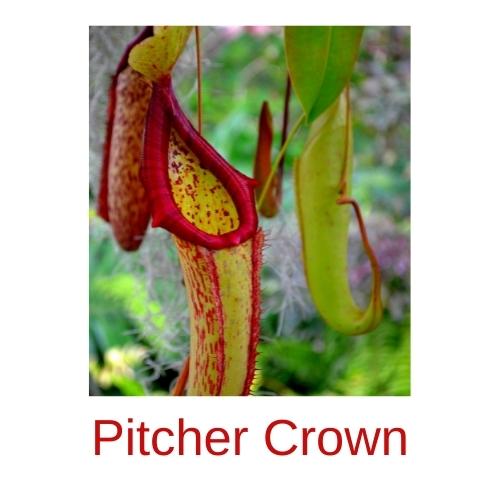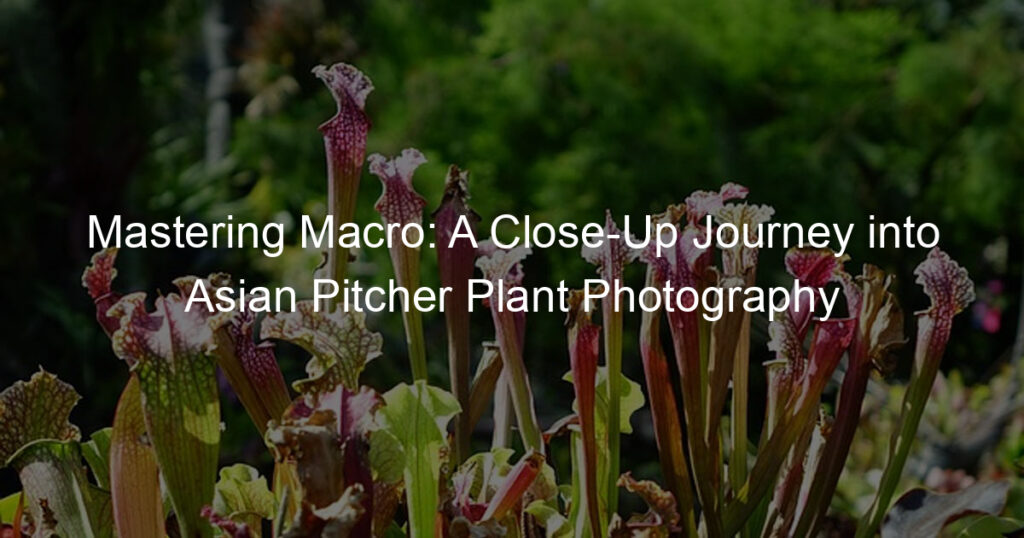
Introduction to Macro Photography
Macro photography is a fascinating field that brings the small wonders of the world into focus. It’s an art that requires patience, precision, and a keen eye for detail. In this blog post, we’ll explore what macro photography is and why it’s so important in plant imaging.
- Definition of Macro Photography
- Importance of Macro Photography in Plant Imaging
Macro photography, also known as close-up photography, is a type of photography that involves capturing small subjects at extremely close distances. The goal is to make the subject appear larger than life, revealing details that might otherwise go unnoticed. This technique is often used to photograph insects, flowers, and other small objects.
Macro photography plays a crucial role in plant imaging. It allows us to see the intricate details of plants that are often invisible to the naked eye. From the delicate veins of a leaf to the complex structure of a flower, macro photography brings the hidden world of plants to life. It’s not just about capturing beautiful images; it also helps scientists and researchers study plant structures in great detail.
Understanding macro photography is the first step to mastering it. As we delve deeper into this topic, we’ll explore how to use macro photography to capture stunning images of the Asian Pitcher Plant, learn about different techniques, and study some case studies. So, let’s embark on this exciting journey of discovery together!
Asian Pitcher Plant: A Unique Subject for Macro Photography
Let’s dive into the world of the Asian Pitcher Plant, a fascinating subject for macro photography. This plant, with its unusual shape and vibrant colors, offers endless opportunities for stunning, detailed shots.
- Introduction to Asian Pitcher Plant
- Why Asian Pitcher Plant is ideal for Macro Photography
- Unique Shape: The plant’s pitcher-shaped leaves offer a unique perspective for macro shots.
- Vibrant Colors: The plant’s vibrant colors, ranging from green to red, provide a rich palette for photographers.
- Intricate Details: The plant’s intricate details, such as the veins on the leaves and the tiny hairs inside the pitcher, are perfect for close-up shots.
- Dynamic Subject: The plant’s ability to trap insects adds an element of action and drama to your shots.
The Asian Pitcher Plant, also known as Nepenthes, is a carnivorous plant native to Southeast Asia. It’s known for its unique pitcher-shaped leaves that trap insects. The plant’s vibrant colors and intricate details make it a captivating subject for macro photography.

Look at the picture above. Notice the plant’s vibrant colors and intricate details? That’s what makes it a captivating subject for macro photography.
There are several reasons why the Asian Pitcher Plant is an ideal subject for macro photography:
With the Asian Pitcher Plant, you can capture stunning macro shots that are not only visually appealing but also tell a story. So, grab your camera and start exploring the fascinating world of the Asian Pitcher Plant!
Macro Photography Techniques for Asian Pitcher Plant Images
Macro photography is a unique form of photography that allows us to capture the intricate details of small subjects. One such fascinating subject is the Asian Pitcher Plant. In this section, we will discuss the essential equipment needed for macro photography of plants, focusing on the Asian Pitcher Plant.
Equipment for Macro Photography of Plants
Having the right equipment is key to achieving stunning macro shots. Let’s explore some of the recommended cameras, lenses, and accessories for macro photography of plants.
- Recommended Cameras
- Essential Lenses for Macro Shots of Asian Pitcher Plant
- Useful Accessories
For macro photography, a DSLR or mirrorless camera with a high-resolution sensor is ideal. Cameras like the Nikon D850 or the Canon EOS 5D Mark IV are excellent choices as they offer great image quality and flexibility.
A macro lens is a must-have for capturing the intricate details of the Asian Pitcher Plant. A 100mm macro lens is a good choice as it provides a comfortable working distance from the subject. Brands like Canon, Nikon, and Sony offer high-quality macro lenses.
Accessories can greatly enhance your macro photography experience. A sturdy tripod is essential for stability. Other useful accessories include a remote shutter release to avoid camera shake, and a macro ring light for better illumination.
Remember, while having the right equipment is important, it’s your skills and understanding of macro photography techniques that will truly make your images stand out. So, keep practicing and experimenting with different settings and compositions.
Settings for Asian Pitcher Plant Close-up
When it comes to capturing the intricate details of the Asian Pitcher Plant, your camera settings play a crucial role. Let’s discuss the three key settings: aperture, shutter speed, and ISO.
- Aperture Settings
The aperture is the opening in your lens through which light enters. It’s measured in f-stops, and a lower f-stop means a larger aperture and more light. For a close-up of the Asian Pitcher Plant, you’ll want a larger aperture (lower f-stop) to focus on the plant and blur the background. This is known as a shallow depth of field. For example, an f-stop of f/2.8 or f/4 would be ideal.
- Shutter Speed
Shutter speed is the length of time your camera’s shutter is open. It’s measured in seconds or fractions of a second. For macro photography, a faster shutter speed is often better to prevent motion blur. However, if you’re shooting in low light or want to capture motion (like a bug crawling on the plant), you might opt for a slower shutter speed. A good starting point could be 1/200 of a second.
- ISO Settings
ISO is your camera’s sensitivity to light. A higher ISO allows you to shoot in darker conditions, but it can also lead to more noise (graininess) in your photos. For a crisp, clear image of the Asian Pitcher Plant, try to keep your ISO as low as possible. An ISO of 100 or 200 is a good starting point, but you might need to increase it if you’re shooting in low light.
Remember, these settings are just a starting point. The best settings for your photo will depend on your specific situation and the effect you want to achieve. Don’t be afraid to experiment and see what works best for you!
| Setting | Recommended Starting Point |
|---|---|
| Aperture | f/2.8 or f/4 |
| Shutter Speed | 1/200 of a second |
| ISO | 100 or 200 |
By mastering these settings, you’ll be well on your way to capturing stunning close-ups of the Asian Pitcher Plant and other subjects in macro photography.
Composition Techniques in Photography
Photography is an art, and like any other art form, it has its own set of rules and techniques. In this section, we will explore some of the basic composition techniques that can help you take stunning plant photographs.
Basic Composition Techniques for Plant Photography
Composition techniques are the building blocks of photography. They guide the viewer’s eye towards the most important elements of your photo, creating a sense of balance and harmony. Here are three basic composition techniques that every plant photographer should know:
- The Rule of Thirds
- Leading Lines
- Patterns and Textures
The Rule of Thirds is a fundamental composition technique in photography. Imagine dividing your frame into nine equal rectangles, three across and three down. The idea is to place the main subject of your photo along these lines or at the intersections. This technique can create more interest and balance in your photo.
Leading lines are lines within an image that leads the viewer’s eye to another point in the image, usually to a focal point, or in some cases, in a path that is directed by the photographer. In plant photography, these could be the stems, branches, or the edges of leaves.
Patterns and textures can add depth and interest to your plant photographs. The repetitive shape of leaves, the texture of the bark, or the pattern created by flowers can all be used to enhance your photos. Remember, the key is to keep the viewer’s eye within the photo.
Mastering these basic composition techniques can significantly improve your plant photography skills. Remember, the best way to improve is to practice. So, grab your camera and start exploring the world of plant photography!
Advanced Composition Techniques for Macro Photography
Macro photography is a unique form of photography that allows us to see the world in a new light. It can be challenging, but with the right techniques, you can capture stunning images. Here are some advanced composition techniques that can help you improve your macro photography skills.
- Framing the Subject
- Using Depth of Field
- Experimenting with Angles
Framing is a technique that involves positioning your subject in such a way that it stands out. In macro photography, you can use natural elements like leaves, flowers, or even shadows to frame your subject. This helps draw the viewer’s attention to the subject and makes your image more interesting. For example, if you’re photographing a tiny insect, you could use the surrounding leaves to frame it, creating a natural border that highlights the insect.
Depth of field refers to the range of distance in a photo that appears sharp. In macro photography, using a shallow depth of field can help you isolate your subject and blur out the background. This can make your subject stand out and create a beautiful bokeh effect. For instance, when photographing a flower, you could use a shallow depth of field to keep the flower in focus while blurring the background, making the flower the main point of interest in your image.
Experimenting with different angles can help you capture unique and interesting images. Don’t be afraid to get down low or shoot from above. Try different perspectives until you find one that works best for your subject. For example, if you’re photographing a mushroom, you could try shooting from a low angle to make it appear larger and more imposing. Remember, the best angle is often not the most obvious one, so don’t be afraid to experiment.
In conclusion, mastering these advanced composition techniques can help you take your macro photography to the next level. Remember, the key to great photography is practice, so keep experimenting and refining your skills. Happy shooting!
Mastering Macro Shots: Case Studies
Let’s delve into some real-world examples of macro photography. These case studies will provide you with practical insights and techniques to help you master your macro shots.
-
Case Study 1: Asian Pitcher Plant Photo Guide
The Asian Pitcher Plant, with its unique shape and vibrant colors, presents an excellent subject for macro photography. In this case study, the photographer used a 100mm macro lens to capture the intricate details of the plant. The use of a tripod and a remote shutter release helped in reducing camera shake, ensuring sharp images. The photographer also used a narrow aperture (f/16) to get a greater depth of field, capturing more details in focus.
Key insight: The use of appropriate equipment and settings can greatly enhance the quality of your macro shots.
-
Case Study 2: Techniques for Plant Photography
In this case study, the photographer focused on various techniques for plant photography. The use of a diffuser to soften the harsh sunlight resulted in evenly lit images. The photographer also experimented with different angles and compositions to create unique and interesting shots. For instance, shooting from a low angle made the plant appear larger and more imposing.
Key insight: Experimenting with different techniques and perspectives can add a unique touch to your macro shots.
-
Case Study 3: Mastering Macro Shots
This case study is about a photographer who mastered macro shots through practice and experimentation. The photographer started with basic equipment and gradually upgraded as they improved their skills. They also spent a lot of time studying their subjects and understanding their behavior. This helped them anticipate the best moments to capture.
Key insight: Mastering macro shots requires patience, practice, and a deep understanding of your subject.
In conclusion, these case studies demonstrate that mastering macro shots involves a combination of using the right equipment, experimenting with different techniques, and understanding your subject. Remember, the key to great macro photography is practice and experimentation. So, grab your camera and start shooting!
Conclusion: The Journey of Macro Photography
As we wrap up our exploration into the world of macro photography, let’s take a moment to reflect on the journey we’ve embarked on. We’ve delved into the techniques, the subjects, and the artistry behind capturing the smallest details of our world. Let’s recap and highlight the key takeaways.
- Recap of Macro Photography Techniques
- Key Takeaways for Asian Pitcher Plant Photography
- Final Thoughts on Mastering Macro Shots
Macro photography is all about capturing the minutiae, the details often overlooked. We’ve learned about the importance of using a dedicated macro lens, the role of aperture in controlling depth of field, and the significance of lighting in revealing the intricate details of our subjects. We’ve also discovered the power of composition in creating compelling macro shots, from the rule of thirds to the use of negative space.
The Asian Pitcher Plant, with its unique structure and vibrant colors, presents a fascinating subject for macro photography. We’ve learned that patience and careful observation are key to capturing the plant’s intricate details. We’ve also discussed the importance of background selection, and how it can enhance the plant’s features. Remember, the goal is to highlight the plant’s unique characteristics, not to overshadow them.
Mastering macro photography is a journey, not a destination. It requires practice, patience, and a keen eye for detail. Remember, the best macro shots are often the result of careful planning and a deep understanding of your subject. So, keep experimenting, keep learning, and most importantly, keep shooting. As the famous photographer Ansel Adams once said, “You don’t take a photograph, you make it.”
As we conclude, remember that the world of macro photography is vast and full of potential. Whether you’re photographing the Asian Pitcher Plant or any other subject, the techniques and insights we’ve discussed will serve as a solid foundation. So, go out there, start exploring the tiny wonders of our world, and let your creativity shine through your macro shots.








